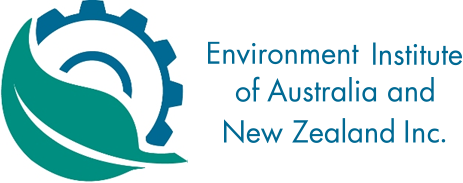-
Member Login
- Home
- About
- Institute Groups
- Membership
- Events
- News & Publications
- Institute Programs
- Resources
- Jobs Board
- Contact Us
- Site Info
How to Address Wicked Problems | Tu Kaha Conference Outcomes
In 2017, EIANZ hosted the conference Tu Kaha: Stand Tall - Fronting up with wicked solutions. Delegates at the conference discussed the wicked environmental problems we're facing today and have come up with some recommendations for wicked solutions.
The recommendations across all streams have been summarised and grouped according to the topic. The most frequently raised action across all streams concerned the importance of working collaboratively with other professionals and with communities of interest.
The EIANZ Board encourages individuals, Divisions & the NZ Chapter and Special Interest Sections (SISs) to pick up on the recommendations that are most relevant to you and seek to advance them through events, submissions, training and your own professional practice.
The topics identified:
- Collaboration and interdisciplinary approaches
- Marketing and promotion to improve environmental practice
- Improving science communications
- Improving impact assessment
- Utilising innovative tools and learning from case studies
- Measuring and monitoring
- Reducing waste
DOWNLOAD THE RECOMMENDATIONS (PDF)
Topic: Collaboration and interdisciplinary approaches
What we need to do |
How to do it |
Foster collaboration between key sectors, such as between local government and the insurance industry to improve planning for climate change resilience. |
Undertake workshops, put case studies on the EIANZ website or hold EIANZ Steps modules on stakeholder involvement, empowerment, identifying affected stakeholders, getting kids involved and recognising different value sets. |
| Develop capabilities in planning for climate change resilience, such as changes to land use zoning practices. | Improve collaboration within the Institute when developing submissions government policies, such as the New Zealand National Policy Statement on natural hazards. |
| Investigate, share and utilise innovative approaches and case studies to address challenges associated with historical land-use planning practices that did not sufficiently incorporate climate change impacts and natural hazards. | Foster interdisciplinary approaches by including in Certification processes, such as the ethical scenarios as part of the interview process. |
Leverage the unique market position of the Institute to facilitate discussions to improve alignment between government policy, the commercial sector and the needs of the environment. |
Reinforce the need for consideration of the precautionary principle, and other principles of sustainable development, in submissions for projects, policies and plans. |
Topic: Marketing and promotion to improve environmental practice
What to do |
How to do it |
| Elevate the importance of ethics by practitioners in each project they are involved in. | Promote the benefits of using CEnvPs to maintain standards. |
| Increase capability and understanding, through training and professional development in ethical scenarios and ethical practice. | Lobby for legislative change to include suitably qualified practitioner requirements, particularly for environmental assessment and compliance activities. |
| Encourage regulatory authorities to recruit and promote the use of CEnvP and ethical practice in advice-giving. |
Topic: Improving science communications
What we need to do |
How to do it |
| Communicating uncertainty transparently, confidently and appropriately. | Provide practitioners with ‘real world’ best practice examples. |
| Developing skills to improve science communication, particularly to enable practitioners to succinctly engage with all different types of audiences that influence them into action. | Utilise stories and case studies to demonstrate behavioural change. |
| Understanding and utilising different tools, styles, messages and language depending on the circumstances. | Leverage the reputation of the Institute to ‘find our voice’ to communicate with the private sector about how their activities impact the environment and the benefits to them of improving their environmental practice. |
| Utilise networks, mentors and the ‘brains trust’ of experienced environmental practitioners. |
Topic: Improving Impact Assessment
What we need to do |
How to do it ................. |
| Increasing the capability and awareness of environmental practitioners to the importance of social impact assessment and suitable methods. | Facilitate training at local levels. ............................................................................................................................ |
| Utilise strategic environmental assessment, including to identify and protect conservation areas early in the planning process. |
Topic: Utilising innovative tools and learning from case studies
What we need to do |
How to do it |
| Knowledge management, dissemination of approaches. .............................................................. | Share information through various approaches, including webinars, events, articles/thought pieces, training courses (EIANZ or ‘mapped’), and awards for best practice. |
| Promote proven models for private sector involvement in delivering environmental outcomes. | |
| Benefits of gradual change, nudge theory. |
Topic: Measuring and monitoring
What we need to do |
How to do it |
| Encouraging companies to measure, monitor, report and improve their environmental performance, including providing tangible examples of good practice. | EIANZ should communicate with decision makers and regulators the importance of:
|
| Provide examples on the EIANZ website of best practice environmental condition-setting and monitoring. | |
| Regularly include presentations on measuring and monitoring at EIANZ conferences and seminars. | |
| Undertake training to influence and enable positive change within organisations. | |
Topic: Reducing waste
What we need to do |
How to do it |
| Encourage and promote reducing, reusing and recycling in all circumstances, such as promoting ways to reduce food waste and minimising waste streams. | Share case studies and facilitate events that showcase best practice. |
| Undertaking research in the use of marginal and recycled material as a substitute for premium aggregate and to identify the barriers to uptake. |
We acknowledge and value the rights and interests of Indigenous Peoples in the protection and management of environmental values through their involvement in decisions and processes, and the application of traditional Indigenous knowledge.

